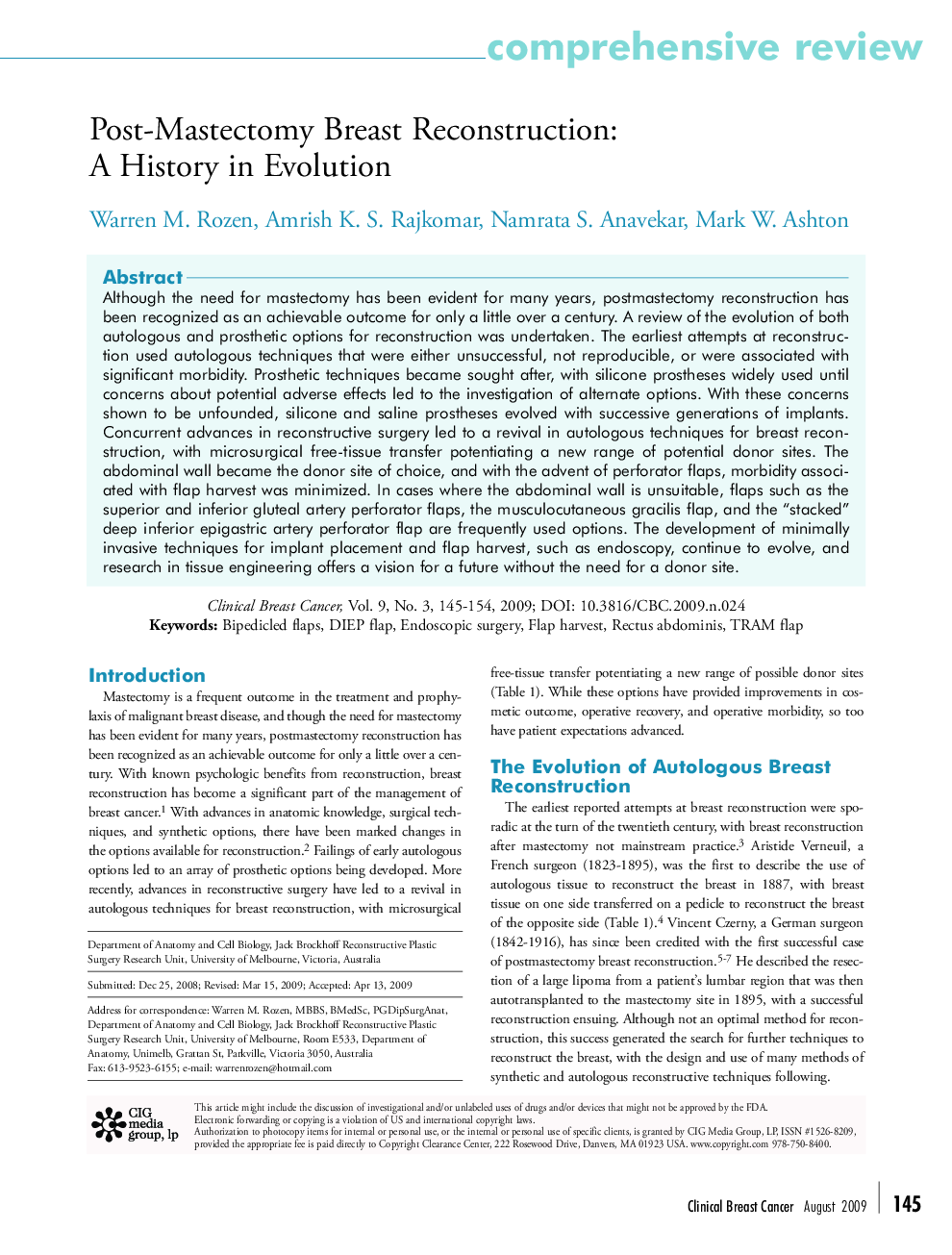| کد مقاله | کد نشریه | سال انتشار | مقاله انگلیسی | نسخه تمام متن |
|---|---|---|---|---|
| 2751035 | 1149385 | 2009 | 10 صفحه PDF | دانلود رایگان |

Although the need for mastectomy has been evident for many years, postmastectomy reconstruction has been recognized as an achievable outcome for only a little over a century. A review of the evolution of both autologous and prosthetic options for reconstruction was undertaken. The earliest attempts at reconstruction used autologous techniques that were either unsuccessful, not reproducible, or were associated with significant morbidity. Prosthetic techniques became sought after, with silicone prostheses widely used until concerns about potential adverse effects led to the investigation of alternate options. With these concerns shown to be unfounded, silicone and saline prostheses evolved with successive generations of implants. Concurrent advances in reconstructive surgery led to a revival in autologous techniques for breast reconstruction, with microsurgical free-tissue transfer potentiating a new range of potential donor sites. The abdominal wall became the donor site of choice, and with the advent of perforator flaps, morbidity associated with flap harvest was minimized. In cases where the abdominal wall is unsuitable, flaps such as the superior and inferior gluteal artery perforator flaps, the musculocutaneous gracilis flap, and the “stacked” deep inferior epigastric artery perforator flap are frequently used options. The development of minimally invasive techniques for implant placement and flap harvest, such as endoscopy, continue to evolve, and research in tissue engineering offers a vision for a future without the need for a donor site.
Journal: Clinical Breast Cancer - Volume 9, Issue 3, August 2009, Pages 145-154